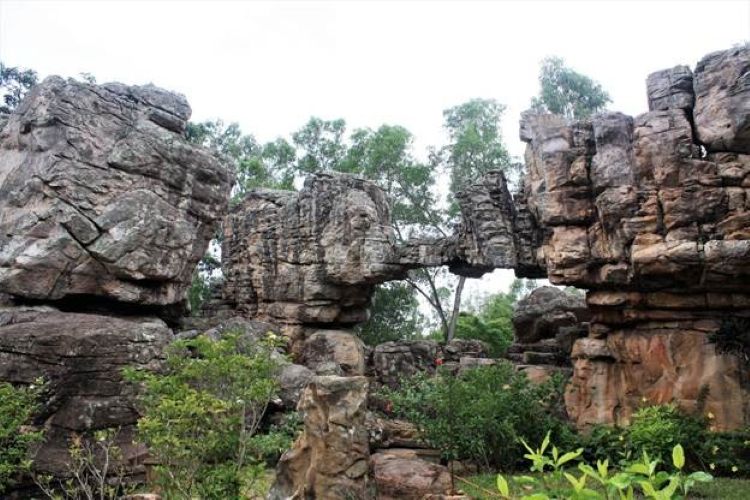Seven more natural heritage sites added to UNESCO’s Tentative List of World Heritage

Natural Heritage of Tirumala Hills has been included in UNESCO’s Tentative List now
India continues to make significant strides in safeguarding and showcasing its rich natural and cultural heritage. Seven more natural heritage sites have been successfully included in UNESCO’s Tentative List of World Heritage Sites. Altogether, now India’s count on the Tentative List has jumped from 62 to 69 properties. Significantly, the list now comprises 49 cultural, 17 natural, and three mixed heritage properties. And, this accomplishment reaffirms India’s unwavering commitment to preserving and promoting its extraordinary natural and cultural legacy.
As per UNESCO’s protocol, inclusion in the Tentative List is a prerequisite for any site to be nominated for the prestigious World Heritage List.
Details of the Newly Added Sites:
- Deccan Traps at Panchgani and Mahabaleshwar, Maharashtra: It is home to some of the best-preserved and studied lava flows in the world. These sites form part of the massive Deccan Traps and are located within the Koyna Wildlife Sanctuary, a UNESCO World Heritage Site.
- Geological Heritage of St. Mary’s Island Cluster, Karnataka: Known for its rare columnar basaltic rock formations, this island cluster dates back to the Late Cretaceous period. It offers a geological snapshot from around 85 million years ago.
- Meghalayan Age Caves, Meghalaya: The stunning cave systems of Meghalaya, particularly the Mawmluh Cave, serve as the global reference point for the Meghalayan Age in the Holocene Epoch. It reflects significant climate and geological transitions.
- Naga Hill Ophiolite, Nagaland: A rare exposure of ophiolite rocks, these hills represent oceanic crust uplifted onto continental plates. It offers deep insights into tectonic processes and mid-ocean ridge dynamics.
- Erra Matti Dibbalu (Red Sand Hills), Andhra Pradesh: These visually striking red sand formations near Visakhapatnam showcase unique paleo-climatic and coastal geomorphological features. These reveal Earth’s climatic history and dynamic evolution.
- Natural Heritage of Tirumala Hills, Andhra Pradesh: Featuring the Eparchaean Unconformity and the iconic Silathoranam (Natural Arch), this site holds immense geological significance. Also, it represents over 1.5 billion years of Earth’s history.
- Varkala Cliffs, Kerala: The scenic cliffs along Kerala’s coastline expose the Warkalli Formation of the Mio-Pliocene age. Further, there also are natural springs and striking erosional landforms, offering both scientific and touristic value.
India’s Commitment to Global Heritage
The inclusion of these sites is a significant step toward future nominations for the World Heritage List. Further, it reflects India’s strategic focus on integrating its natural wonders with global conservation efforts.
The Archaeological Survey of India (ASI), the nodal agency for the World Heritage Convention on behalf of India. The ASI has played a crucial role in compiling and submitting these nominations.

